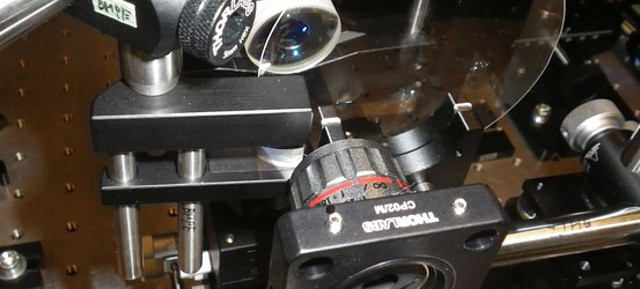If you thought high-speed photography was already advanced, think again: two universities in Japan have unveiled a new camera that’s 1000 times faster than the previous best — and it captures chemical reactions in a single shot.
A joint venture by the University of Tokyo and Keio University, the new hardware uses a technology called Sequentially Timed All-optical Mapping Photography (STAMP). Its optical shutter shoots images consecutively in less than one-trillionth of a second at a resolution of 450 x 450 pixels. The researchers explain how it works:
The principle of this method — ‘motion picture femtophotography’ — is all-optical mapping of the target’s time-varying spatial profile onto a burst stream of sequentially timed photographs with spatial and temporal dispersion.
Essentially, it does away with the need to repetitively acquire images, which means it can be up to 1000 times faster than usual high-speed cameras. It’s no looker or lightweight — it currently occupies a footprint about one square metre in size — but it is terribly fast. So far, the researchers have used it to capture images that were previously impossible to visualise in a single shot, like chemical reactions and the conduction of heat. The heat in question was travelling at a speed about one-sixth the velocity of light. See, pretty fast. [Nature via Wall Street Journal]
